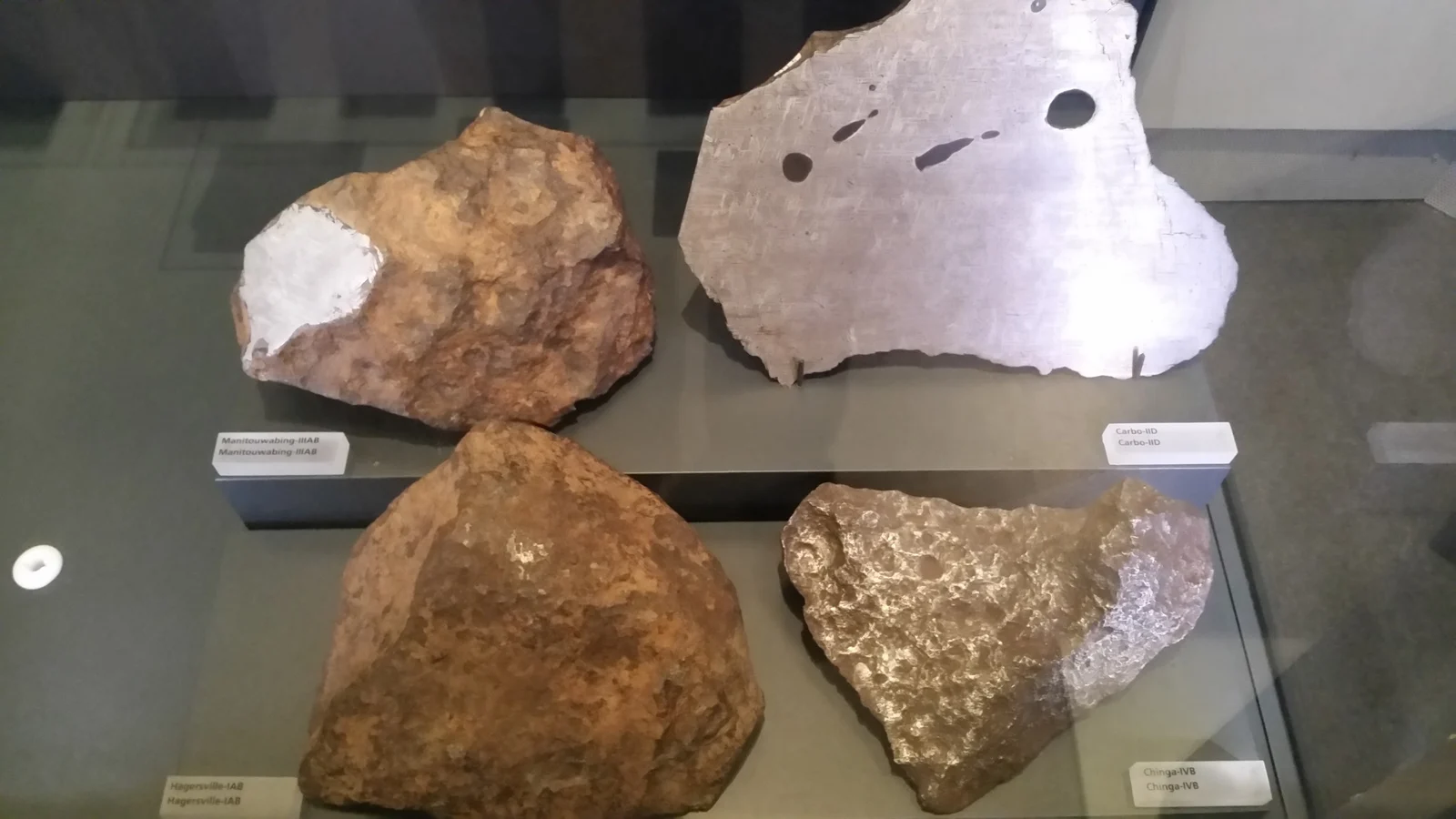
Meteorite that nearly hit B.C. woman may be 470 million years old
While the age hasn't been verified, the director of Western University's paleomagnetic and petrophysical laboratory surmises the meteorite that nearly hit a B.C. woman last fall originated from a collision in the asteroid belt between Jupiter and Mars about 470 million years ago.
The space rock that came very close to hitting a B.C. woman while she was in bed last fall is believed to be 470 million years old.
In early October 2021, Ruth Hamilton was sleeping soundly in her Golden, B.C., home when she was awakened by the noise of her dog's frantic barking. Moments later, a boom was heard as the ceiling of her bedroom was torn open and drywall strewn across her bed sheets. The result was a football-sized hole in her roof.
RELATED: B.C. woman rocked awake by meteorite chunk crashing into bedroom
The rock that was discovered was confirmed to be a meteorite. Though she narrowly avoided any possible injury from a direct hit, she was shocked. If she was laying down just a couple of inches over in her bed, she could have been injured or killed in her sleep.
The Western University’s physics and astronomy department in London, Ont., analyzed the rock and confirmed it was meteorite. “As soon as I opened that email and saw the photos,” Phil McCausland, director of Western’s paleomagnetic and petrophysical laboratory, told Maclean’s in an interview. "There was no question.”
Hamilton's close encounter is one of extreme rarity -- the chance of a meteorite hitting your house is approximately one in 100 billion.
If the meteorite did hit Hamilton, she would have been only the second person in history to have experienced such an incident. The only known human to have been hit by a meteorite was Ann Hodges, who was struck on Nov. 30, 1954.
METEORITE AGE UNCONFIRMED BUT SUSPECTED
While it hasn't been verified, McCausland surmises the meteorite originated from a collision in the asteroid belt between Jupiter and Mars about 470 million years ago. He called meteorites “intrinsically useful." “They give us a window on the history of the solar system that we don’t get from the Earth.”
Researchers were able to determine the rock's path before its impact utilizing footage from a home security camera in Calgary, Alta. After inspecting its trajectory, they determined its point of origin in the asteroid belt. McCausland and Western University colleague Peter Brown, a physics and astronomy professor, are working on a paper to present the findings.

The rock that just missed Hamilton was identified as a chondrite meteorite. While it comprises 70-80 per cent of the rocks that hit Earth, this particular type of meteorite captivates researchers such as McCausland. “It came from way back in time,” he said, “when the solar system was just starting.”
According to Scott Sutherland, a meteorologist/science writer at The Weather Network, the chondrite meteorite is named for the small, rounded mineral granules -- known as chondrules -- that surround the ancient calcium aluminum inclusions (CAI).
HOW TO DETERMINE IF YOU FOUND A METEORITE
So, how do you know if you've stumbled upon a legitimate meteorite?
In a 2016 interview with Sutherland, Kimberly Tait, a curator of mineralogy with the Royal Ontario Museum, said sometimes it can be hard to distinguish whether the rock is terrestrial or from space. But there are a couple of ways to identify the difference. The first is to check if it's magnetic
"You can take a magnet, even [one] off your fridge, and just the touch the rock. See if it has any magnetic [traits]. A lot of these have a lot of iron in them, so they tend to be magnetic. That's sort of the first pass," said Tait.

(Scott Sutherland/The Weather Network)
The second way to check to its authenticity is to look at the rock's surface.
"These things are coming through our atmosphere, they're burning up. That's where we see the white-hot streak across the sky with shooting stars. We get this...it's called a fusion crust. [It's] this black, glassy outer appearance," said Tait.
As well, the United States Geological Survey (USGS) adapted tips for identifying a meteorite from the University of New Mexico Meteorite Museum, and posted them here.
QUICK FACTS:
Rocks in space are known meteoroids (larger ones are usually called asteroids)
When a meteoroid enters the atmosphere, it produces a streak of light across the sky called a meteor
Larger meteoroids produce a bright fireball, or can even explode as a bolide
Any piece of a meteoroid or asteroid that hits the ground is called a meteorite
There are three basic kinds of meteorites - iron, stony and stony-iron
Most meteorites contain some of the earliest minerals to form in our solar system, more than 4.5 billion years ago
Some meteorites are even from Mars or the moon
With files from Scott Sutherland, meteorologist/science writer at The Weather Network.
Thumbnail: Photo is a file image of a moon meteorite taken by Scott Sutherland, meteorologist/science writer at The Weather Network. It is not an image of the meteorite that collided with Ruth Hamilton's home.
Follow Nathan Howes on Twitter.






